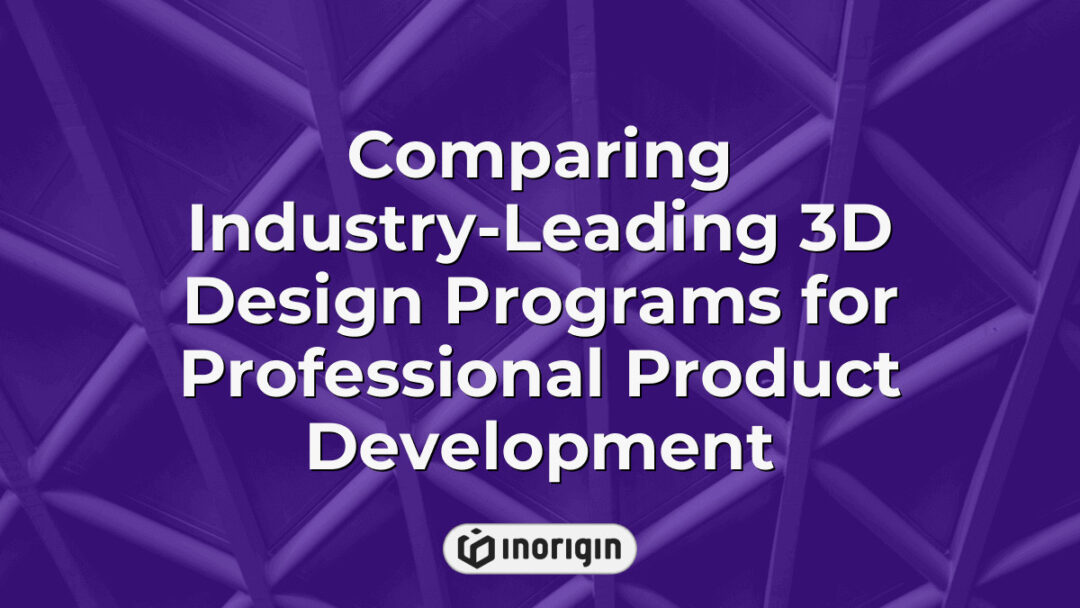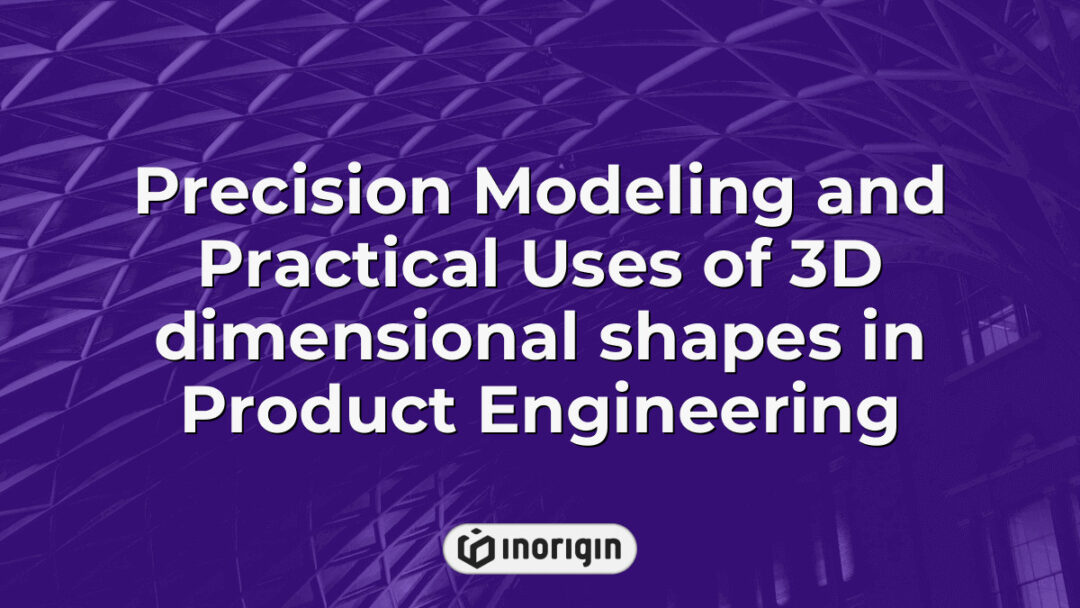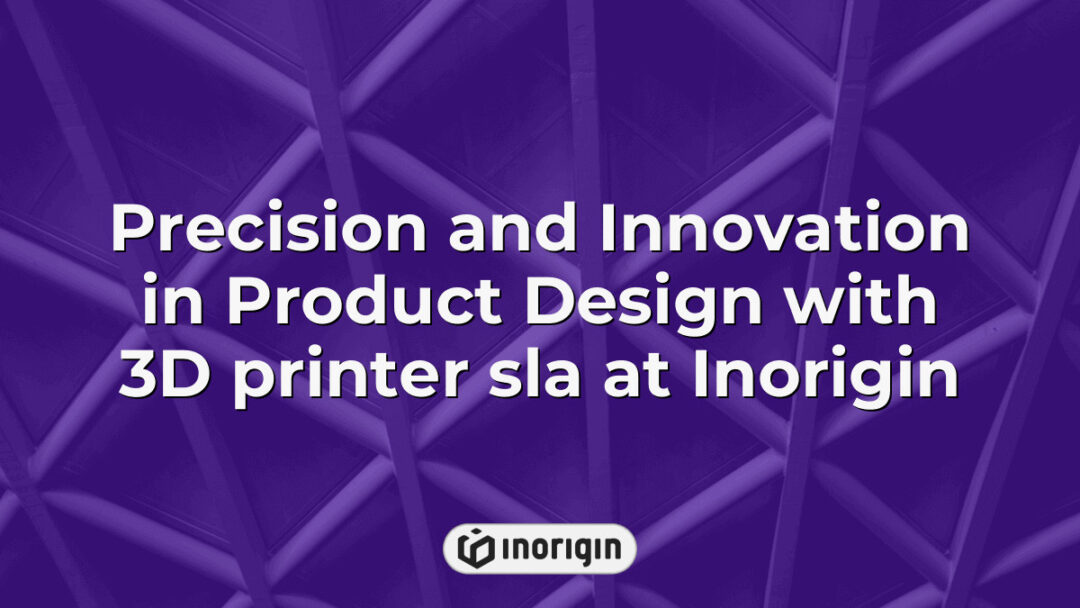In an era where digital innovation drives creativity and productivity, the 3D design industry has experienced exponential growth, with a projected market value of over $13 billion by 2026. This surge underscores the increasing reliance on sophisticated visualization tools across various sectors, including architecture, gaming, film, and product design. As industries pivot towards immersive experiences and detailed representations, understanding the capabilities and applications of advanced 3D design programs becomes essential for professionals aiming to harness this technology effectively. With numerous software options available today—each offering unique features tailored to different creative needs—the exploration of these tools reveals not only their technical intricacies but also their transformative potential in shaping visual narratives and enhancing user engagement.
| Aspect | Key Takeaway |
|---|---|
| Overview of 3D Design Programs | 3D design programs are essential tools for professionals across industries like product engineering and industrial design, enabling the creation of detailed and innovative visualizations from concept to production. |
| Key Features | Look for compatibility, intuitive interfaces, advanced rendering, customization, and collaboration tools to optimize workflow and project outcomes in 3D design software. |
| Beginner vs Advanced Software | While beginner-friendly programs such as Tinkercad and SketchUp ease entry into 3D design, advanced applications like Autodesk Maya and ZBrush offer powerful capabilities suited for complex product development and engineering tasks. |
| Free vs Paid Programs | Free 3D design programs support initial learning phases, but investing in paid software ensures enhanced performance, professional features, and ongoing support crucial for high-level engineering and product design projects. |
| Industry-Specific Tools | Specialized 3D design software tailored for sectors like product engineering and industrial design improves precision and efficiency, integrating with CAD, simulation, and prototyping technologies. |
| Integration with Other Software | Seamless interoperability with engineering simulation, CAD, and rendering tools streamlines complex design workflows and accelerates product development cycles. |
| Learning Resources and Community Support | Utilizing comprehensive tutorials, forums, and collaborative platforms enhances proficiency in 3D design programs, fostering innovation and problem-solving within the product design community. |
Overview Of 3D Design Programs
The realm of 3D design programs serves as a digital canvas where creativity and technology converge, symbolizing the fusion of imagination and precision akin to an artist wielding a brush. These software applications facilitate the transformation of abstract concepts into tangible visual representations, thereby enabling designers across various fields—such as architecture, product design, animation, and gaming—to breathe life into their visions. Notably, while traditional artistic methods may rely on physical materials and manual techniques, 3D design programs harness advanced computational algorithms and rendering technologies to produce intricate models that can be manipulated in virtual environments. As these tools continue to evolve, they enhance user capabilities by incorporating features such as real-time collaboration, simulation of physical properties, and integration with augmented reality (AR) systems. Consequently, the significance of 3D design programs transcends mere utility; they embody a shift towards more immersive and interactive experiences that redefine both creative processes and end-user engagement within diverse industries.
Key Features To Look For In 3D Design Software
When selecting 3D design software, it is essential to consider various key features that can significantly impact the user experience and project outcomes. First and foremost, compatibility with different operating systems ensures accessibility for a broader range of users; thus, choosing software that operates seamlessly across platforms becomes paramount. Furthermore, an intuitive user interface is crucial as it facilitates ease of navigation and reduces the learning curve for newcomers. Additionally, robust rendering capabilities are necessary for producing high-quality visuals, which enhance presentations and client communications. Moreover, customization options empower designers to tailor their workflows according to specific project requirements, thereby increasing efficiency. It is also important to evaluate collaboration tools within the software since teamwork often plays a vital role in large-scale projects. Collectively, these features create a comprehensive framework that not only supports creativity but also streamlines the design process in diverse applications.
Popular 3D Design Programs For Beginners
The realm of 3D design programs for beginners resembles a vast digital marketplace, where an array of software options beckons like brightly colored stalls at a bustling bazaar. Each program claims to possess the secret sauce for transforming novice users into adept designers overnight, yet this allure often masks underlying complexities. Among the most popular choices is Tinkercad, which provides an approachable interface and intuitive tools that facilitate rapid prototyping and basic modeling concepts. Similarly, SketchUp offers a balance between user-friendliness and advanced capabilities, allowing newcomers to explore architectural design with relative ease while simultaneously catering to more experienced users through its extensive plugin ecosystem. Blender stands out as well, boasting comprehensive features suited for animation and game development; however, its steep learning curve may evoke both admiration and trepidation among those just embarking on their creative journey. Thus, while each program has distinct attributes designed to accommodate varying levels of expertise, it becomes evident that the selection process must consider not only immediate usability but also long-term growth potential within the expansive field of 3D design.
Advanced 3D Design Software For Professionals
Advanced 3D design software for professionals encompasses a range of sophisticated tools that facilitate complex modeling, animation, and rendering tasks across various industries. Notably, programs such as Autodesk Maya and Blender are renowned for their comprehensive feature sets, which include advanced rigging, particle simulation, and photorealistic rendering capabilities. Moreover, these applications support extensive plugin ecosystems that allow users to customize workflows according to specific project requirements. Additionally, specialized software like ZBrush excels in high-resolution sculpting and texturing processes, making it indispensable for character development in the gaming and film sectors. Furthermore, industry-standard solutions such as Cinema 4D provide powerful motion graphics features that enhance visual storytelling through dynamic animations. As a result of these advancements, professionals can leverage these tools not only to produce intricate designs but also to streamline collaboration within multidisciplinary teams engaged in large-scale projects. The continuous evolution of advanced 3D design software reflects an ongoing commitment to meeting the growing demands of creative industries while fostering innovation and efficiency in digital content creation.
Comparison Of Free Vs. Paid 3D Design Programs
The comparison of free versus paid 3D design programs reveals significant differences in features, functionality, and overall user experience. Initially, free software often provides basic tools sufficient for beginners or hobbyists, thereby facilitating an accessible entry point into the realm of 3D modeling. However, as users progress and require more advanced capabilities—such as enhanced rendering options, extensive libraries of assets, and professional-grade support—the limitations inherent in free platforms become evident. Conversely, paid 3D design programs typically offer a comprehensive suite of sophisticated functionalities that cater to professionals engaged in intricate projects; these include superior performance metrics and ongoing updates that enhance usability. Notably, the investment in premium software can yield substantial returns through increased efficiency and productivity, enabling designers to achieve higher quality outputs within shorter timeframes. Ultimately, the choice between free and paid solutions should be guided by individual needs and project requirements, recognizing that both categories have their distinct advantages depending on the context of use.
Industry-Specific 3D Design Tools
The realm of 3D design encompasses a diverse array of tools tailored to specific industries, each crafted to address unique challenges and requirements. These specialized software solutions serve as invaluable assets in various fields such as architecture, gaming, product design, and animation. By providing industry-centric functionality, these tools facilitate enhanced creativity and efficiency within professional workflows. For instance, architects may utilize programs that enable precise modeling and visualization of structures, while game developers benefit from software designed for character rigging and environment creation. The following points highlight key features that differentiate industry-specific 3D design tools:
- Integration with existing industry-standard applications.
- Customizable templates catering to sector-specific needs.
- Advanced rendering capabilities that enhance visual presentation.
- Collaborative functionalities supporting team-based projects.
Such distinctions emphasize the importance of selecting appropriate tools aligned with particular professional demands. Consequently, engaging with these targeted resources not only streamlines processes but also fosters innovation across various sectors reliant on 3D design methodologies.
Integration With Other Software And Tools
The landscape of 3D design is increasingly characterized by the necessity for seamless integration with a variety of software and tools. As projects become more complex and collaborative, designers face the challenge of ensuring that diverse platforms can communicate effectively. For instance, many industry-specific 3D design programs are equipped with APIs (Application Programming Interfaces) that facilitate interoperability, allowing users to export models directly into rendering engines or simulation software without compromising quality. Furthermore, advancements in cloud-based solutions have emerged as vital components in this ecosystem; they enable real-time collaboration among teams dispersed across various geographical locations. This interconnectedness not only enhances workflow efficiency but also fosters innovation through the amalgamation of different technologies. Ultimately, the ability to integrate multiple systems will determine the effectiveness and adaptability of 3D design applications within evolving industries.
Tips For Choosing The Right 3D Design Program
Choosing the appropriate 3D design program is a critical decision that can significantly impact both workflow efficiency and project outcomes. Initially, it is essential to assess the specific requirements of the intended projects, as different software packages offer varying functionalities tailored for distinct applications, such as product design, animation, or architectural visualization. Furthermore, considerations regarding the user interface and ease of use are paramount; programs with intuitive interfaces may facilitate smoother learning curves and enhance productivity. Additionally, compatibility with existing tools and hardware should not be overlooked, since seamless integration can streamline processes and reduce technical issues. Cost also plays a vital role in the selection process; therefore, evaluating budget constraints alongside available features will help identify suitable options. Ultimately, systematic analysis of these factors allows for informed decisions that align closely with organizational goals and individual needs within the realm of 3D design.
Future Trends In 3D Design Software
The landscape of 3D design software is undergoing significant transformation, driven by advancements in technology and changing industry demands. To begin with, the integration of artificial intelligence (AI) within design tools has become increasingly prevalent, enhancing automation processes and enabling designers to focus on creativity rather than repetitive tasks. Furthermore, cloud-based solutions are gaining traction, providing collaborative opportunities that allow teams to work seamlessly across various geographical locations. Additionally, emerging trends such as virtual reality (VR) and augmented reality (AR) applications have revolutionized how users engage with 3D designs, creating immersive experiences that foster deeper understanding and interaction with designed objects.
- Impact of AI on Creativity
- Facilitates intuitive design suggestions
- Automates mundane tasks
- Empowers artists to explore innovative concepts
Benefits of Cloud-Based Solutions
- Enhances team collaboration regardless of location
- Ensures real-time updates and feedback
- Reduces hardware dependency for high-performance rendering
Immersive Technologies: VR and AR
- Transforms user experience through realism
- Encourages emotional connection with designs
- Expands possibilities for client presentations
As these trends continue to evolve, their implications for the future of the industry will likely be profound. The increasing reliance on advanced technologies promises not only to streamline workflows but also to catalyze unprecedented levels of innovation in design practices. Consequently, stakeholders must remain vigilant in adapting to these changes while embracing the potential benefits that lie ahead in the realm of 3D design software.
Resources For Learning 3D Design
In the realm of 3D design, learning resources act as guiding stars for aspiring designers navigating the expansive universe of digital creation. Much like a sailor relies on constellations to chart a course through uncharted waters, individuals seeking proficiency in 3D design can benefit from an array of educational materials that illuminate various pathways toward mastery. Numerous online platforms offer structured courses and tutorials tailored to different skill levels, facilitating incremental learning while accommodating diverse learning styles. Moreover, communities such as forums and social media groups provide collaborative spaces where knowledge is shared, feedback is exchanged, and inspiration flourishes. Additionally, literature encompassing textbooks and e-books serves as foundational texts that delve into both the theoretical aspects and practical applications of 3D design software. In essence, these multifaceted resources collectively contribute to building a robust framework for anyone aiming to excel in the field of 3D design, transforming novices into skilled practitioners equipped with both technical acumen and creative vision.
Frequently Asked Questions
What Hardware Specifications Are Recommended For Running 3D Design Software?
The hardware specifications required for effectively running 3D design software are critical to ensuring optimal performance and functionality. Firstly, a powerful central processing unit (CPU) is essential, as it significantly influences the speed of computations and overall responsiveness of the software. A multi-core processor with high clock speeds is recommended to handle complex calculations efficiently. Secondly, graphics processing units (GPUs) play an indispensable role in rendering detailed visualizations; therefore, selecting a dedicated GPU with ample memory can enhance graphical fidelity and reduce rendering times. Additionally, sufficient random access memory (RAM) is vital for multitasking capabilities and managing large projects without lag; typically, a minimum of 16 GB is advised, although 32 GB or more may be beneficial for intricate designs. Furthermore, storage solutions should not be overlooked; solid-state drives (SSDs) provide faster data retrieval rates compared to traditional hard disk drives (HDDs), thereby improving loading times for files and applications. Lastly, maintaining compatibility between these components ensures that systems perform harmoniously under demanding workloads associated with advanced 3D design tasks.
How Can I Optimize My Workflow While Using 3D Design Programs?
The optimization of workflow in 3D design programs can significantly enhance productivity, with studies indicating that efficient workflows can increase output by up to 40%. To achieve this level of efficiency, several strategies may be employed. Firstly, the organization of digital assets is crucial; utilizing a systematic file naming and folder structure enables quick access to necessary resources, thereby reducing time spent searching for files. Furthermore, employing keyboard shortcuts and customizing user interfaces can streamline repetitive tasks, allowing designers to focus more on creative processes rather than navigating through menus. Additionally, leveraging batch processing tools for rendering or exporting multiple files concurrently not only saves time but also minimizes interruptions during the creative workflow. Moreover, maintaining an updated knowledge base regarding software updates and new features ensures that users remain at the forefront of available capabilities. By systematically implementing these techniques, individuals engaged in 3D design can create a more fluid and productive working environment that fosters creativity while minimizing inefficiencies.
Are There Any Common Mistakes To Avoid When Starting With 3D Design?
When embarking on the journey of 3D design, several common mistakes can impede progress and hinder creative potential. Firstly, a lack of proper planning often leads to inefficient workflows; without a clear vision or outline, designers may find themselves overwhelmed by complexity. Furthermore, neglecting to familiarize oneself with software tools and features can result in underutilization of available resources, ultimately affecting the quality of work produced. Additionally, many beginners overlook the importance of scale and proportion, which are critical for creating realistic models; this oversight can detract from the overall effectiveness of a project. Moreover, insufficient attention to detail during the modeling phase frequently necessitates extensive revisions later in the process, thereby consuming valuable time and effort. Lastly, failing to seek constructive feedback inhibits growth; engagement with peers or mentors can provide invaluable insights that enhance skill development and foster creativity within 3D design endeavors. Addressing these pitfalls is essential for cultivating proficiency and achieving success in 3D design projects.
What Are The Best Practices For Exporting And Sharing 3D Designs?
The process of exporting and sharing 3D designs involves several best practices that enhance both the usability and accessibility of these digital assets. Firstly, it is essential to select an appropriate file format that aligns with the intended use; for instance, formats such as STL or OBJ are commonly employed for 3D printing, whereas FBX or GLTF are preferred for real-time applications like gaming or virtual reality. Additionally, ensuring compatibility across different software platforms can significantly reduce issues related to data loss or corruption during transfers. Furthermore, optimizing the model before export—such as reducing polygon count while maintaining quality—can improve performance in various applications. Moreover, incorporating metadata and documentation within shared files aids collaborators in understanding the design’s intent and specifications. Lastly, utilizing cloud-based services for sharing not only facilitates easier access but also encourages collaborative efforts among team members by allowing multiple users to engage with the design concurrently. These practices collectively contribute to a more efficient workflow in the realm of 3D design dissemination.
How Does The Community Support Impact The Choice Of A 3D Design Program?
The role of community support in the selection of a 3D design program can be likened to navigating a vast ocean; just as sailors rely on maps and beacons to guide their journeys, designers depend on robust communities for guidance and resources. Community support encompasses various elements such as forums, tutorials, user-generated content, and collaborative platforms that facilitate learning and problem-solving within the realm of 3D design. For instance, software like Blender has cultivated an extensive online community characterized by active participation in forums, where users share insights, offer feedback, and contribute to knowledge bases. This vibrant ecosystem not only enhances the learning curve for newcomers but also fosters innovation through collective input from diverse backgrounds. Furthermore, programs with substantial community backing often provide access to a wealth of shared plugins and scripts that extend functionality beyond what is initially offered. Thus, when evaluating 3D design tools, the presence of an engaged community becomes a critical factor influencing both usability and creative potential, ultimately shaping the user’s experience and success in utilizing these programs effectively.
Conclusion
In the vibrant realm of 3D design, navigating through a myriad of software options can resemble traversing an intricate maze. By carefully selecting tools that align with specific needs and expertise levels, designers can unlock creative potential, transforming abstract ideas into vivid three-dimensional realities that captivate audiences and elevate projects to new dimensions.
Related posts:
- 3D rendering Techniques Driving Architectural Design and Visual Realism at Inorigin
- Top 3D Rendering Software Free Options for Professional Product Design at Inorigin
- Precision Workflow Enhancements for Obj File Models in Product Design and 3D Rendering
- How a Cad Program Transforms Product Design and 3D Printing at Inorigin
- 3D model program Features Shaping Product Design Innovation at Inorigin
- Best 3D modeling software for precision design and advanced 3D printing integration




